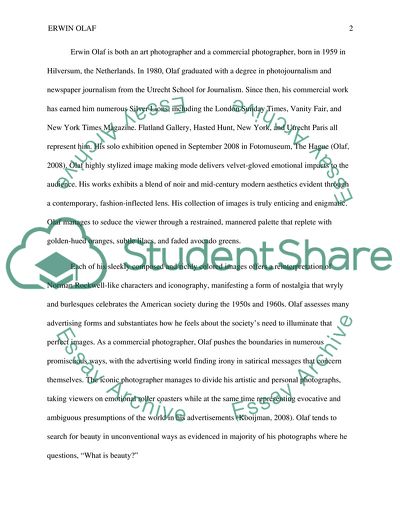Cite this document
(Art and Photography: Erwin Olaf Report Example | Topics and Well Written Essays - 1250 words, n.d.)
Art and Photography: Erwin Olaf Report Example | Topics and Well Written Essays - 1250 words. https://studentshare.org/visual-arts-film-studies/1771510-introduce-erwin-olaf
Art and Photography: Erwin Olaf Report Example | Topics and Well Written Essays - 1250 words. https://studentshare.org/visual-arts-film-studies/1771510-introduce-erwin-olaf
(Art and Photography: Erwin Olaf Report Example | Topics and Well Written Essays - 1250 Words)
Art and Photography: Erwin Olaf Report Example | Topics and Well Written Essays - 1250 Words. https://studentshare.org/visual-arts-film-studies/1771510-introduce-erwin-olaf.
Art and Photography: Erwin Olaf Report Example | Topics and Well Written Essays - 1250 Words. https://studentshare.org/visual-arts-film-studies/1771510-introduce-erwin-olaf.
“Art and Photography: Erwin Olaf Report Example | Topics and Well Written Essays - 1250 Words”. https://studentshare.org/visual-arts-film-studies/1771510-introduce-erwin-olaf.


